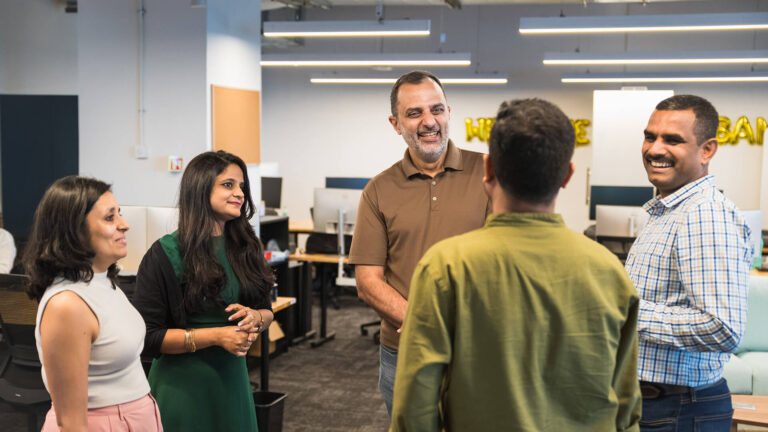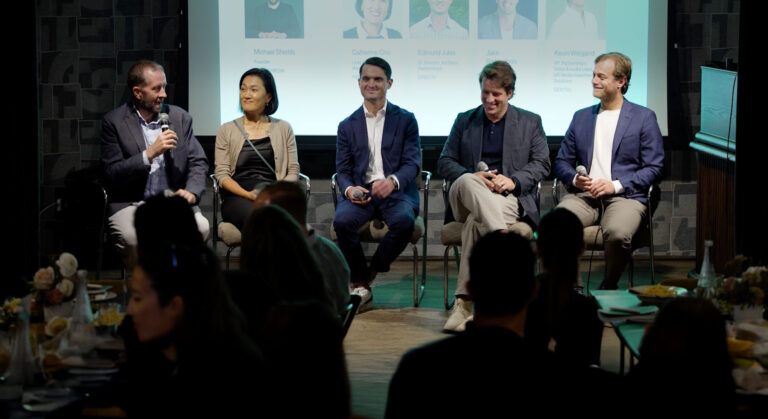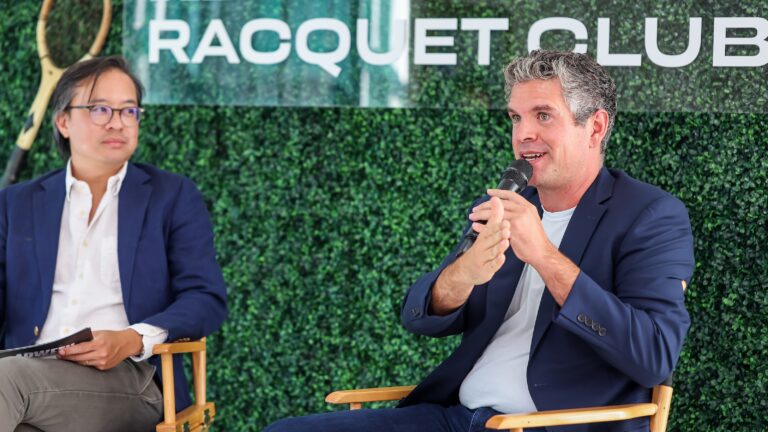Want more? Check out the Innovators Unscripted Bonus Round with Nick Halas.
Dentsu EMEA’s Nick Halas on how sell-side decisioning is reimagining programmatic innovation
Welcome to Innovators Unscripted, a series where we share unfiltered insights from some of the most disruptive voices in today’s advertising ecosystem. Nick Halas, head of product strategy, Amplifi Global, joins for a conversation about how Dentsu is rethinking the role of the supply side, embracing sell-side decisioning, and applying the principles of Sanpo Yoshi to foster a more collaborative, value-driven ecosystem.
The video transcript below has been lightly edited for clarity.
How is Dentsu rethinking the ad tech stack and what role does the supply side play in that transformation?
We know at the moment, there’s a lot of transformation going on on the supply side. The way that we’ve always considered the programmatic ecosystem, we’re at a point in time now where we’re rethinking and reimagining what that solution really looks like.
The partnership we have with Index enables us to consider the dynamics within the supply side and how that can allow us to extract stronger performance, speed, and capabilities for our clients.
That’s possibly creating a bit of positive tension not only in our organization, but I think in the industry as well.
“We’re at the start of a journey now where we’re reevaluating where we should be, and the supply side is going to play an absolutely pivotal part in that.”
What made Index the right partner for this phase of your programmatic strategy?
In our organization, we obviously do a lot of work across a lot of suppliers. We do quite an intense RFI analysis to ensure we’re working with the right partners for the right reasons.
We certainly felt from an EMEA perspective with Index, there were some really big opportunities with who you’ve been working with and the reach that you have.
“We’re all about a win-win when we talk about publishers or suppliers, fostering this relationship where you need to win, we need to win, and our clients ultimately need to get the biggest gain.”
The closeness that we’ve had on collaboration is always something that resonates strongly with Dentsu.
We’re an organization that has always sought out strong partnerships where we genuinely are working side by side. We’re not trying to create tension with you. We’re trying to go, this is a problem that we both mutually have. How do we help solve it?
That’s what’s been the most receptive for us in the work we’ve done with you today.
You’re all in on sell-side decisioning for curation and custom targeting. Why does this model resonate with Dentsu and how are you seeing it unlock new value?
There’s a term in Dentsu that originates from our Japanese heritage, Sanpo Yoshi, which is about this value-for-all mechanism. That acts as a good kind of bubble to consider sell-side decisioning.
“Ultimately, what our clients are seeking is fair-market value, performance, but then speed as well, because today’s macroeconomic climate means they need to move quickly to resonate with consumers.”
We’re at a point where that sell-side capability is enabling us to harness and foster quicker adoption of new methods. I know we talk about AI and there’s quite a lot of work we’re doing in that space, which will ingest into the sell-side function.
That’s the point where, if we get that right, I think we can reevaluate how we’ve been doing things. And everything’s always an evolution on this journey.
That’s the bit that we get excited about. We’ve got to crack it and make it work, but we’re almost there.
We have similar views on creating solutions that drive growth for all stakeholders. How do you approach this in your partnerships?
There are three factors we need to get to.
One is ultimately, it’s got to work for our clients in terms of what they want and need, and their pressures. They’re intrinsic to us as much as they are to you.
Two, it’s got to work with the partner. As I said, we foster a win-win mentality. We need to have the same shared common-ground principles to make sure when we go in on the partnership, we’re looking at it to stay.
The worst thing we can do is try and squeeze too much, create tension, and then we never really get any further.
And then there’s also the commercial element, which is it has to work for us all. We’re all businesses. The only way for us to grow and innovate is to make sure it’s working for all of us.
So that trifecta—when that works, we’re in a great place to get going.
How are you tapping into AI to boost performance today, and what do you think that will look like in the future?
The future? I don’t know. It feels like we’re at reception year at school again, where we’re really understanding the principles of how to write language or understand math structure.
There are far more intelligent people in my organization, yours, and a lot of other partners that we’re dealing with that can probably relate and have the vision of where it is right now.
Our vision is really about the fundamentals because it has to work for tomorrow, for our clients. If we spend too much of our time focusing on what it’s going to be like in 12, 18, 24 months, we take our eye off how we make the metrics in AI work for our clients tomorrow. Because it’s impacting their business, and their business is designed for tomorrow as well.
A lot of the work that we’re doing with you and Chalice—a very close partner of both of ours—is genuinely enabling us to think completely differently.
“I’ve taken great joy speaking with your product teams in the last six months, understanding how our container relationship is going to work better, how we can optimize to go even faster, and how the speed and control enable us to take bigger decisionings with more inventory mass.”
All these metrics are new. They didn’t exist when we spoke nine or 12 months ago. We’re learning. We’ve got to test, adapt, evolve. But it’s really exciting.
What’s one piece of advice you’d give to marketers trying to get more from their programmatic strategies?
Sometimes it’s to pause. Pause and reflect.
The world of marketing services moves fast. Just being in Cannes, you’ll understand that more than ever. It feels like it’s hard to catch up and keep pace with it.
“Pause and reflect so we can really work out, is this working and what do we really need to change?”
Sometimes we can get caught quickly, and we’re guilty of it as well, which is just considering what’s going to come next.
But sometimes just pause and reflect. Take a moment to say, actually, should we consider something else? Because it normally is something else.
What excites you most about where programmatic is heading right now?
More than anything, it’s change.
Programmatic keeps moving faster. Like most things, we evolve at a faster generational speed every single time that we move, and programmatic has been a great demonstration of that.
You could argue that compared to before that word “AI” crept into every industry roundtable, probably two years ago, the pace of change is now faster. But it feels like the dynamics on how the programmatic landscape works—just look at a Lumascape map for some of that—there’s probably more tension that’s going to come into it. There’s more consolidation that’s definitely coming into it.
But it feels like it’s at a changing point. When you work in our industry, you’ve got to be ready for change because the pace of it is quite violent at times.
“That’s also quite exciting. We’re all trying to find the next best thing for our clients to adopt and win in a new way.”
It feels like we’ve got a brand new menu coming our way to say, here’s a new recipe of how we do it. And that’s exciting.
“The Sanpo Yoshi element—that value-for-all metric—is really important. We’re big believers that our suppliers and our publishers have to win and succeed. If we want to foster great relationships with them, we have to be delivering for them.”
But again, the other technical point—our clients have to win as well.
It feels like that change is getting to a point where it’s going to get closer in terms of how they work together and the relationship will be rebalanced. Versus at the moment, you could argue they’re too far away and too removed. There are too many forces in the middle—some are working and some aren’t.
There’s a period of change that as it goes on will be a bit easier. But I think people will see more value from it.
Learn more about how you can activate intelligence on the sell side and drive stronger outcomes with sell-side decisioning.
Back to blog







